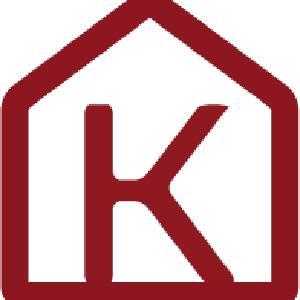
Cooperative Building by Kaenga
 Sara Magalhaes May 22, 2016 05:58 | Hi Kaenga! Thanks for your proposal! Best, Sara |
 Tiziano Cattaneo Jun 13, 2016 12:22 | Hello Kaenga, Good luck for your project proposal. Just review and make it completed before meet deadline after tomorrow. Thank you. |
 Pat Graczyk Jun 14, 2016 02:28 | Hi Kaenga, it is a great proposal and interesting concept. Cooperatives are definitely a good way forward. I was thinking that perhaps you should make a more conservative assumption or put more thought into potential emissions reduction from your project. What number of houses are basing this assumption on? Also, the potential transport emissions might benefit from a little bit more explanation. Thanks and good luck! |
 Lucas Kengmana Jun 14, 2016 08:42 | Proposal contributor Thanks for the comments everyone. It is a real boost to know that there are people out there reading and engaging with our proposal. Also, great question about retrofitting. I definitely would like to allow for retrofitting and have amended to proposal to make that clear. |
 Lucas Kengmana Jun 14, 2016 09:50 | Proposal contributor Kaenga will help to mitigate climate change by creating more energy efficient homes and by helping to reduce transport emissions through increasing urban densification and strategically placing these dwellings next to public transportation. There are significant opportunities to reduce emissions. Six percent of New Zealand’s houses completely lack insulation and most houses have poor insulation that would not meet the requirements of the new Building Code.(20) A study found that New Zealand dwellings’ average winter temperatures were six degrees lower than World Health Organization minimum recommended temperatures.(21) Until recently, there was little evidence that new housing was improving the situation. Average indoor temperature in the Lower North Island of New Zealand (the area where Wellington is located) actually decreased by 0.5 C, between 1971 and 2004.(22) A new law increasing the requirements for insulation and an energy efficiency programme may have improved things somewhat. Nonetheless, it is clear that New Zealand’s current real estate model will only improve its environmental performance when it is forced to. Instead of focusing on building better houses, New Zealanders have been focussing on building larger houses – the average size of NZ houses has almost doubled over the last 70 years, increasing the area that needs to be heated and contributing to urban sprawl and unaffordability. This is particularly disappointing because a McKinsey study on the cost curves of emissions reduction suggests that insulation provides one of the most efficient ways to reduce emissions and that improving water heating can also be done at a net cost savings.(23)
The building cooperative approach will allow people who want a more energy efficient and environmentally friendly home to achieve this in an affordable manner. Although Kaenga will not force its users to select environmentally friendly options, we believe that uptake of these options will be high for the following reasons:
Beacon Pathways managed to produce a house which was able to generate a 50% reduction in electricity while housing 6 rather than the average 2.7 people.(25) Transport emissions make up about 20% of New Zealand’s emissions. By increasing urban density, Kaenga will naturally reduce travel distances and as a result, it should reduce emissions. Further, with good planning, it should be possible to design these developments to maximise public transport options and eliminate the need for a car. This is crucial because as a report from the Australian Railway Association found, the savings the average Wellingtonian will make from using public transport to commute is only $3039 whereas their savings would be the savings the average Wellingtonian will make from using public transport to commute is only $3039 whereas their savings would be $10,586 if they gave up their car altogether. Therefore, incentives to take public transport are much stronger when they are coupled with the ability to completely do away with one’s car (and as discussed in Section 2, building costs can also be saved when a group decides to remove parking from its plans). 0,586 if they gave up their car altogether. Therefore, incentives to take public transport are much stronger when they are coupled with the ability to completely do away with one’s car (and as discussed in Section 2, building costs can also be saved when a group decides to remove parking from its plans). It is difficult to rigorously model Kaenga’s impact. However, for the purposes of illustration, we have assumed that homes built by Kaenga will reduce emissions by 50% of their current average. We believe this is achievable and perhaps even conservative given Beacon Pathways’ data. We also assume that household commutes will decrease from 20 km to 10 km and 73% of residence will swap from commuting by car to commuting by public transport. These assumptions will lead a single household to reduce their CO2e emissions by 760 kgs (562 from energy savings and a 198 kg reduction from transport emission). In our fifth year of operations, we will generate 285 metric tonnes of annual emission reductions from the 513 dwellings built over Kaenga’s lifetime. However, given that these buildings are long-lived (and rarely replaced once built) we believe it is more appropriate to consider lifetime emission reductions. To calculate this, we scale the annual emission reduction for the 400 dwellings built in year five by 50 years (a conservative estimate of a dwelling’s life). Based on this methodology, we calculate a total lifetime saving of 12 Mt CO2e. In the long run, New Zealand’s total emissions could be reduced by up to 4% as a result of Kaenga and the building cooperative approach. This is based on the fact that emissions from housing make up 10% of New Zealand’s emissions, 50% emission reductions can be achieved using green building methods at little extra cost, and the fact that 73% of building cooperatives have shown a demonstrable commitment to sustainability.
(20) http://www.sbc.org.nz/__data/assets/pdf_file/0007/56545/Better-Performing-homes-for-New-Zealanders.pdf, p. 12. (21) Pure Advantage (2012) “Green Growth: opertunities for New Zealand”. (22) Pure Advantage (2012) “Green Growth: opertunities for New Zealand”. (23) http://www.mckinsey.com/insights/sustainability/a_cost_curve_for_greenhouse_gas_reduction (24) For example, one study found it was only 2% more expensive to build a green building (Kats, Greg, Leon Alevantis, Adam Berman, Evan Mills, Jeff Perlman. The Cost and Financial Benefits of Green Buildings, November 3rd, 2008). (25) Pure Advantage (2012) “Green Growth: opertunities for New Zealand”, p. 224. (20) http://www.sbc.org.nz/__data/assets/pdf_file/0007/56545/Better-Performing-homes-for-New-Zealanders.pdf, p. 12. (21) Pure Advantage (2012) “Green Growth: opertunities for New Zealand”. (22) Pure Advantage (2012) “Green Growth: opertunities for New Zealand”. (23) http://www.mckinsey.com/insights/sustainability/a_cost_curve_for_greenhouse_gas_reduction (24) For example, one study found it was only 2% more expensive to build a green building (Kats, Greg, Leon Alevantis, Adam Berman, Evan Mills, Jeff Perlman. The Cost and Financial Benefits of Green Buildings, November 3rd, 2008). (25) Pure Advantage (2012) “Green Growth: opertunities for New Zealand”, p. 224. |
 Chelsea Robinson Jul 5, 2016 09:46 | Hi there I would be happy to help in an advisory capacity in your early stages. Please get in contact :) |
 Lucas Kengmana Jul 11, 2016 04:54 | Proposal contributor @chelsea5577 Awesome! I sent you a PM on this system. If you prefer you can contact me at lucas.kengmana AT kaenga.com |